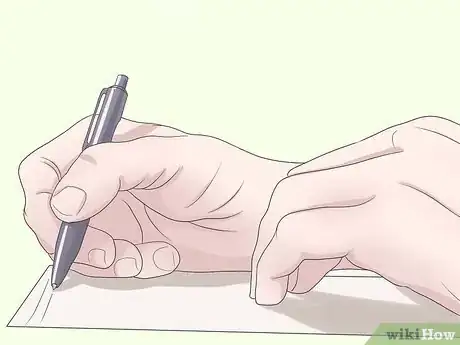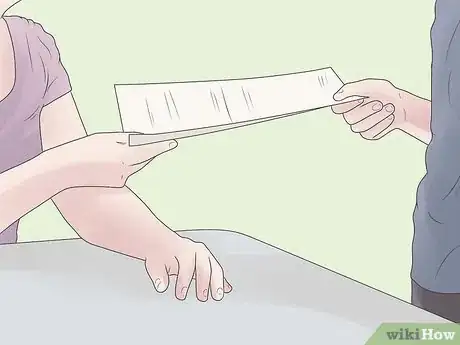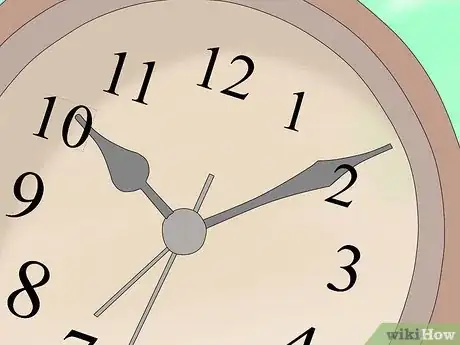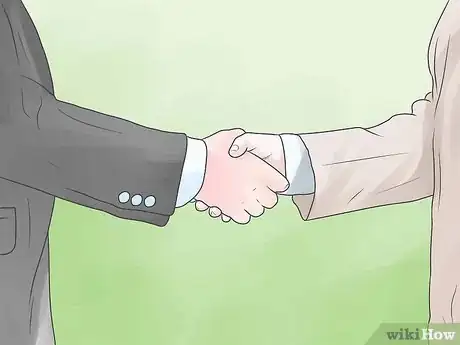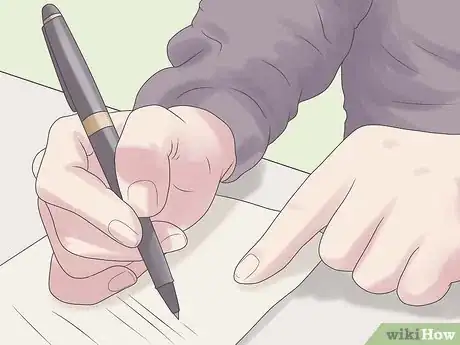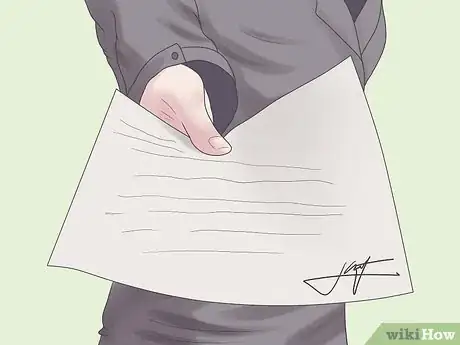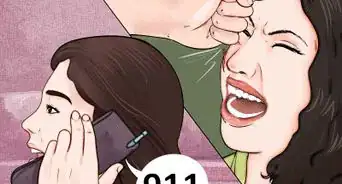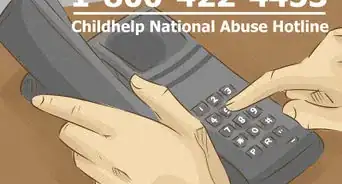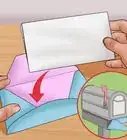This article was co-authored by Clinton M. Sandvick, JD, PhD. Clinton M. Sandvick worked as a civil litigator in California for over 7 years. He received his JD from the University of Wisconsin-Madison in 1998 and his PhD in American History from the University of Oregon in 2013.
There are 7 references cited in this article, which can be found at the bottom of the page.
wikiHow marks an article as reader-approved once it receives enough positive feedback. In this case, 85% of readers who voted found the article helpful, earning it our reader-approved status.
This article has been viewed 347,884 times.
TV shows and movies often paint an inaccurate picture of what it looks like to file and drop criminal charges. As a victim or witness, you cannot drop charges because the government's attorneys decide whether to pursue a case or not. Though prosecutors have final say in the decision, you may be able to convince them they should drop a case.
Steps
How to Amend Your Story
-
1Tell the prosecutor you don't want to press charges. Though the prosecutor decides whether to drop charges, a victim or key witness can have a significant impact on the case. If you say you aren't interested in sending the case to trial, there's a good change the prosecutor will drop the case.[1] This is especially true of minor offenses.
- In most jurisdictions, domestic violence is a "no tolerance" offense: prosecutors will not drop charges, even at victim's request.[2]
-
2Look for inconsistencies in the police report. Call the police station that filed your report to ask for a copy of it. Review the report carefully, paying attention to the section that describes what you told the police. If you notice anything inaccurate in the report, you can change your statement.
- Do not lie to get charges dropped. You could be prosecuted yourself for fraud, perjury, or obstruction of justice.
Advertisement -
3Add new information to your report. You need convincing reasons to persuade a prosecutor to drop charges. This is usually comes in the form of new information, evidence, or witnesses.[3] Note that you can't contradict your earlier statement when adding new information.
- Consider this option only if you provided incorrect information to the police. Whether you made a simple mistake or consciously lied, it could result in punishment for an innocent person. For example, if you thought something had been stolen from you, but you just misplaced it, let the police know.
- Don't try to take back your original statement completely if the statement is correct. You could face criminal charges.
-
4Submit your changes in person. Visit the police station to submit an amendment of the report either through interview or in writing. In either case, bring photo identification so that you can prove you are the person who filed the original report.
- If the case is already scheduled to go before a judge, you may need to show up at the District or County Attorney's office instead.
-
5Wait for the prosecutor to contact you. Law enforcement may ask for further information about the case. Making changes to a police report doesn't guarantee that the prosecutor will drop the charges. If the case proceeds anyway, they may ask you to testify in court. If you don't show up and cooperate, you could be fined or arrested, even if you did not want to press charges.[4]
How to File an Affidavit of Non-Prosecution
-
1Hire an attorney. In some situations or states, you can write an "Affidavit of Non-Prosecution." This is a statement that you don't want prosecutors to pursue the case. Texas allows these affidavits, but, because all states differ, make sure you check your state for the law. An attorney will know how to make your statement convincing. He'll also stop criminal charges of your own by keeping you from contradicting from your original report.
-
2Find low-cost or free representation if you can't afford a lawyer.[5] There are many options available to you if you can't afford an attorney. Look for federally funded grant programs that offer free counsel to low-income individuals. Local law firms often take on pro-bono work, or you might consider visiting your local bar association's self-help clinic. Your county courthouse might even provide a facilitator to guide you through the process.
-
3Write the statement.[6] Ask your lawyer to provide a standard "affidavit of non-prosecution" form. Upon request, the prosecutor might provide a generic "affidavit of non-prosecution" for you. But if you want to, you can write the affidavit yourself.
- Describe the event that occurred, emphasizing evidence or factors that put the crime in a less severe light. Make it clear that you do not think prosecution should occur.
-
4Submit your affidavit. In some states, you can just pay a fee to file your affidavit with the district or county court handling the case. In others, there is no official affidavit system, but you can send a copy of the statement directly to the prosecutor. Contact the court by phone first to make sure you send the statement to the correct person.
- Search online to find the phone number for the court.
- If you're not sure which court is handling the case, search online for "court" and the name of your county.
- If there's a filing fee, make sure you know which forms of payment the court accepts before trying to file your affidavit.
References
- ↑ http://www.nolo.com/legal-encyclopedia/arrests-that-dont-result-criminal-charges.html
- ↑ http://family.findlaw.com/domestic-violence/can-the-victim-drop-domestic-violence-charges.html
- ↑ http://blogs.findlaw.com/blotter/2012/09/5-reasons-prosecutors-drop-criminal-charges.html
- ↑ http://www.justice.gov/usao-wdwa/victim-witness/victim-witness-program-witness-information
- ↑ https://www.lawyers.com/legal-info/research/when-you-cant-afford-a-lawyer.html
- ↑ http://www.pacefirm.com/faq/affidavit-of-non-prosecution.html
- ↑ http://www.occourts.org/self-help/criminal/cleaningupyourrecord.html
About This Article
To drop charges against someone, begin by meeting with the prosecutor for the court case and telling them that you don’t want to press charges, since it’s ultimately their decision. If you have new information that makes the crime seem less severe, go to the police station to submit an amendment to your original report. Alternatively, you can fill out an affidavit of non-prosecution, which tells the court that you don’t think the prosecution should occur, then submit it at the district or county court house. For tips from our Legal reviewer on finding a low-cost or free lawyer to help walk you the process of dropping charges, read on.


